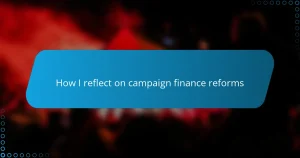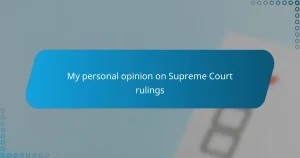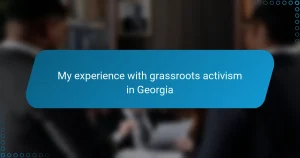Key takeaways
- Partisanship in Congress hampers collaboration, with decisions often made based on party loyalty rather than merit.
- Legislation is frequently stalled due to political identity and partisan conflicts, affecting public trust and progress on critical issues.
- Encouraging bipartisan working groups and reforming committee structures may foster collaboration and reduce the divisive environment in Congress.
- Promoting direct engagement through town halls and informal gatherings can enhance understanding and relationships among lawmakers.
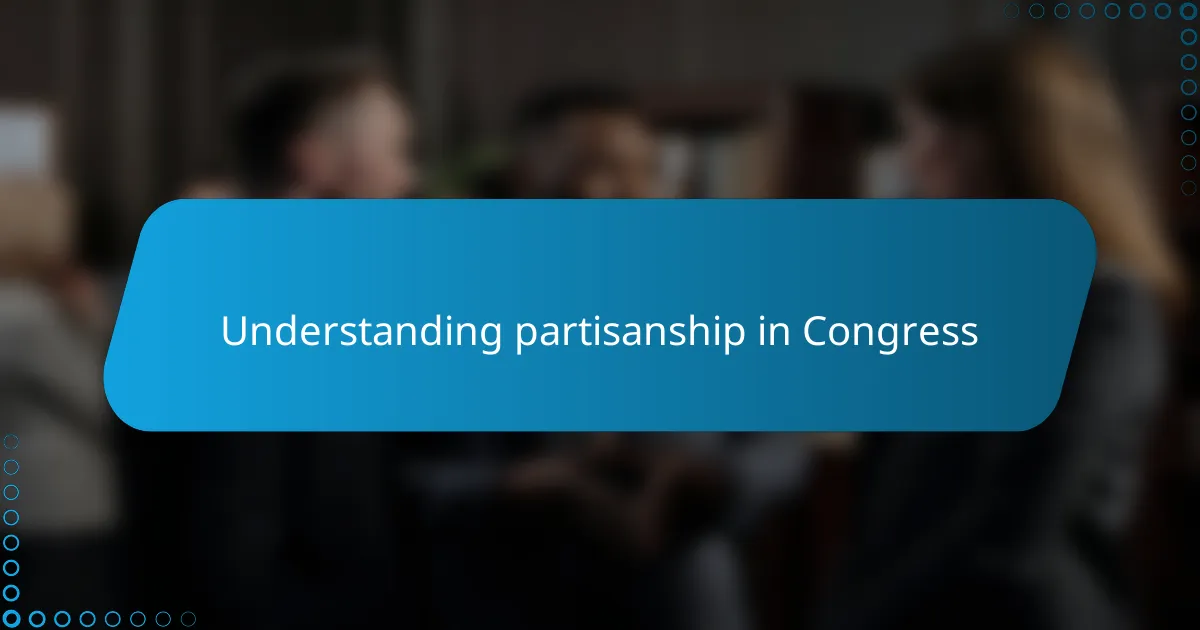
Understanding partisanship in Congress
Partisanship in Congress often feels like an unshakable divide, doesn’t it? From my perspective, it’s less about individual lawmakers and more about the system that rewards strict party loyalty. I’ve watched debates where crossing the aisle feels almost taboo, which made me wonder: when did collaboration become so rare?
What strikes me is how deeply partisanship colors every decision. It’s as if every bill carries a hidden label—Democrat or Republican—before its actual content even gets discussed. I remember following a session where a sensible proposal died overnight simply because it was introduced by the opposing party. That kind of rigidity makes you question whether progress is truly the goal or if winning is what matters most.
At the core, partisanship seems to be both a cause and effect of political identity. But I sometimes ask myself, can Congress break free from this cycle? The personal impact is clear—Americans like me end up frustrated, feeling disconnected from a system that seems more interested in competition than cooperation. Understanding this dynamic is crucial if we hope to see any change.
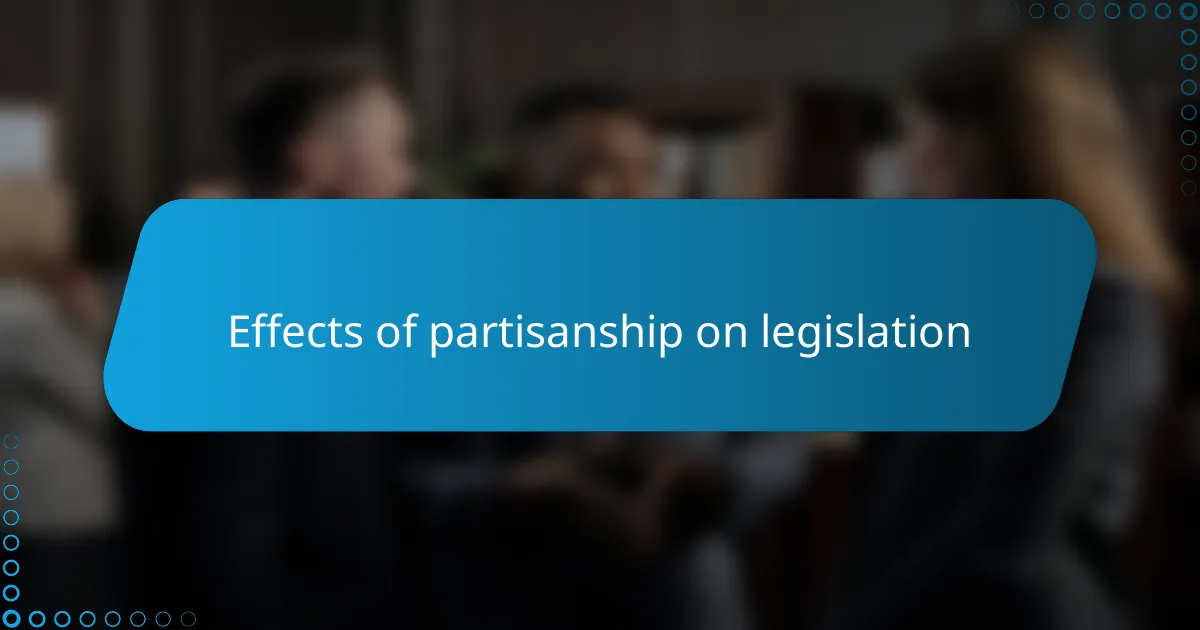
Effects of partisanship on legislation
When partisanship takes the wheel in Congress, legislation often becomes hostage to party politics. I’ve noticed that bills with strong merit get sidelined simply because they don’t come from one’s own party. It’s frustrating to see important issues stall—not because of their content, but because of who supports them.
I sometimes wonder if this hyper-partisan environment even allows for compromise anymore. From what I’ve observed, negotiations turn into battles where each side digs in deeper, making it harder for laws to reflect a balance of perspectives. Does this deadlock serve the people, or just the political agenda?
One vivid example that sticks with me is when a bipartisan health care proposal, which could have helped many, was scrapped due to partisan posturing. It made me realize how often legislation’s fate depends less on what it can achieve and more on which party claims it. That realization feels like a real setback for meaningful progress.
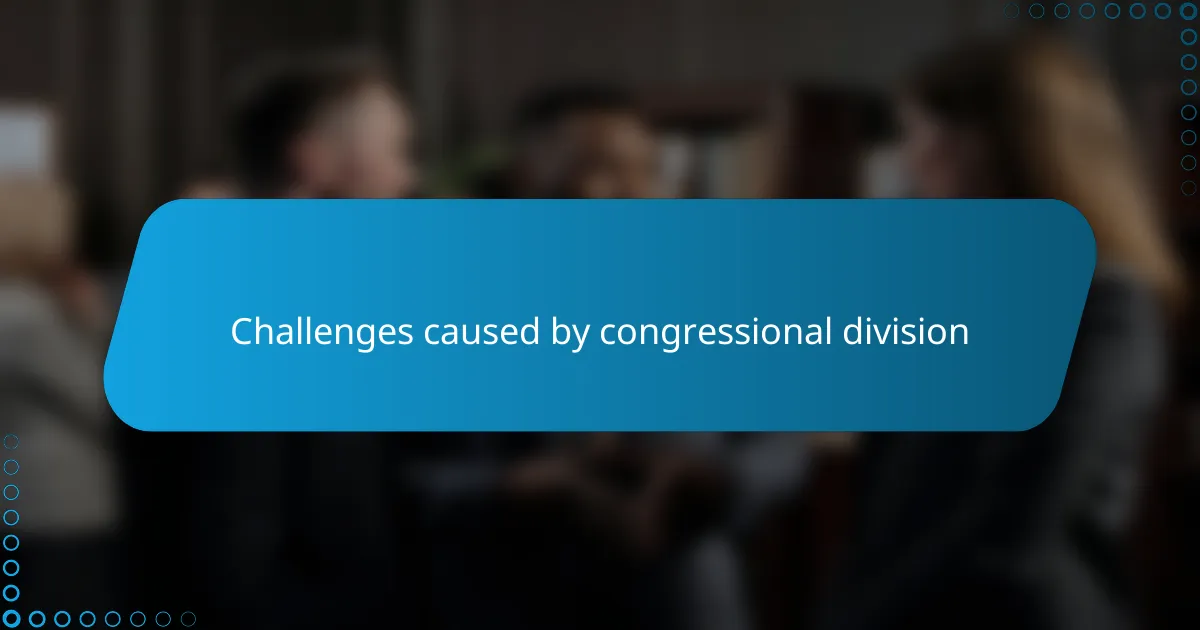
Challenges caused by congressional division
The sharp divisions in Congress create a grinding halt in addressing urgent national issues. I recall watching a critical budget discussion where opposing sides refused to budge, resulting in a government shutdown that hurt everyday people. It made me question: when did political point-scoring become more important than public service?
This stalemate affects not only legislation but also the morale within Congress itself. From my perspective, lawmakers often seem trapped in a cycle of blame and distrust, which only deepens the divide. How can effective governance happen if the very people elected to serve can’t even talk openly to each other?
Sometimes, it feels like the real victims of this division are the citizens who depend on functioning government. I think about families waiting for healthcare reforms or communities in need of infrastructure upgrades—too often left in limbo as congressional gridlock drags on. Isn’t it frustrating that partisan battles can stall progress that would improve lives?
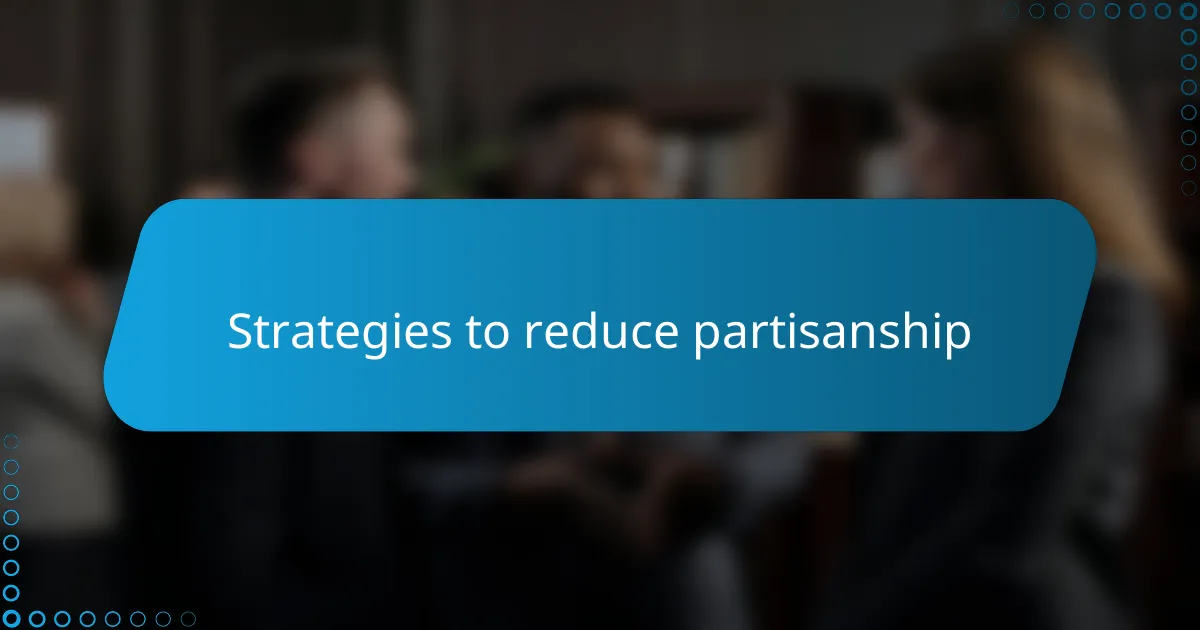
Strategies to reduce partisanship
One approach I’ve found promising is encouraging more bipartisan working groups. When lawmakers come together in smaller, less formal settings, they can focus on problem-solving rather than party lines. It reminds me of a community meeting I attended years ago—when people share stories face-to-face, they often find common ground despite initial disagreements.
Another strategy I’ve considered is reforming how committees are structured to promote cross-party collaboration. If committee assignments rewarded cooperation over loyalty, perhaps members would feel less pressure to oppose just for the sake of their party. Wouldn’t it make sense to design incentives that pull Congress toward unity instead of division?
Sometimes, I wonder if improving transparency around negotiation processes might help as well. When constituents see that their representatives are working together in good faith, it might build public pressure for compromise. After all, isn’t restoring trust between voters and lawmakers a key step toward reducing this partisan gridlock?
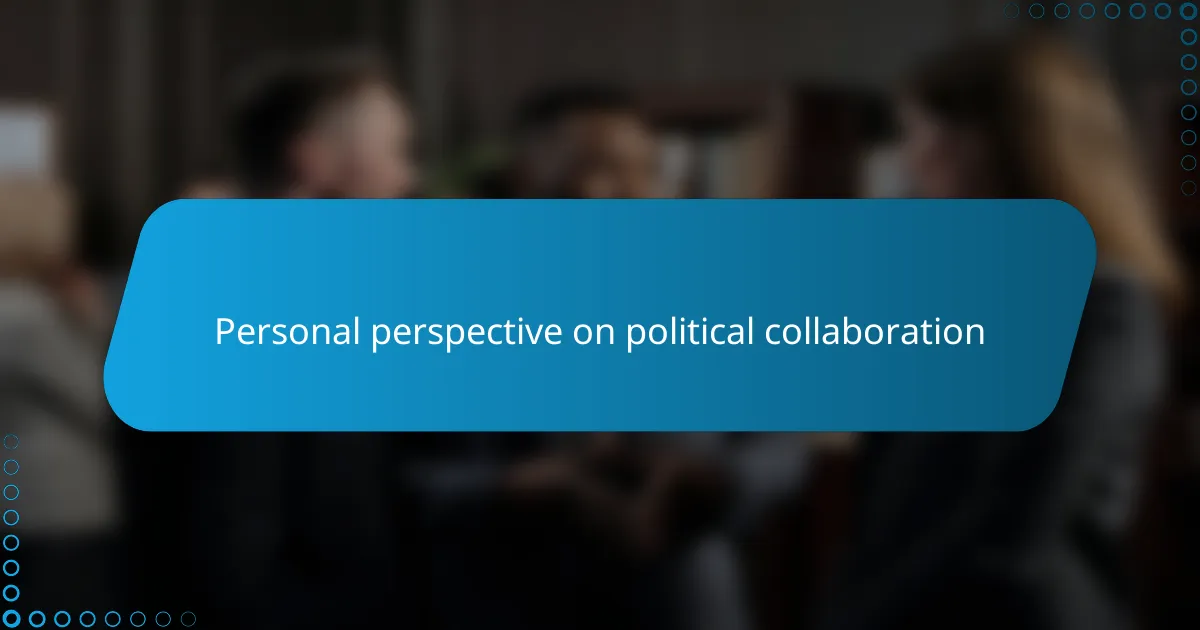
Personal perspective on political collaboration
Political collaboration in Congress feels, to me, like an increasingly rare art. I remember watching a few moments where bipartisan efforts sparked real hope—brief flashes when politicians put aside labels to work toward shared goals. Those moments showed me that collaboration isn’t impossible; it just requires courage and willingness.
Sometimes, I ask myself why this spirit of cooperation isn’t more common. Could it be that the intense pressure from party leadership stifles genuine exchange? In my opinion, breaking through these barriers depends on individuals daring to trust across the aisle, even when it feels risky.
From my perspective, collaboration isn’t just about passing bills; it’s about rebuilding connections that benefit everyone. When lawmakers truly listen to each other, they create space for solutions that reflect diverse views. I can’t help but hope that this kind of respect will become a foundation for Congress again.
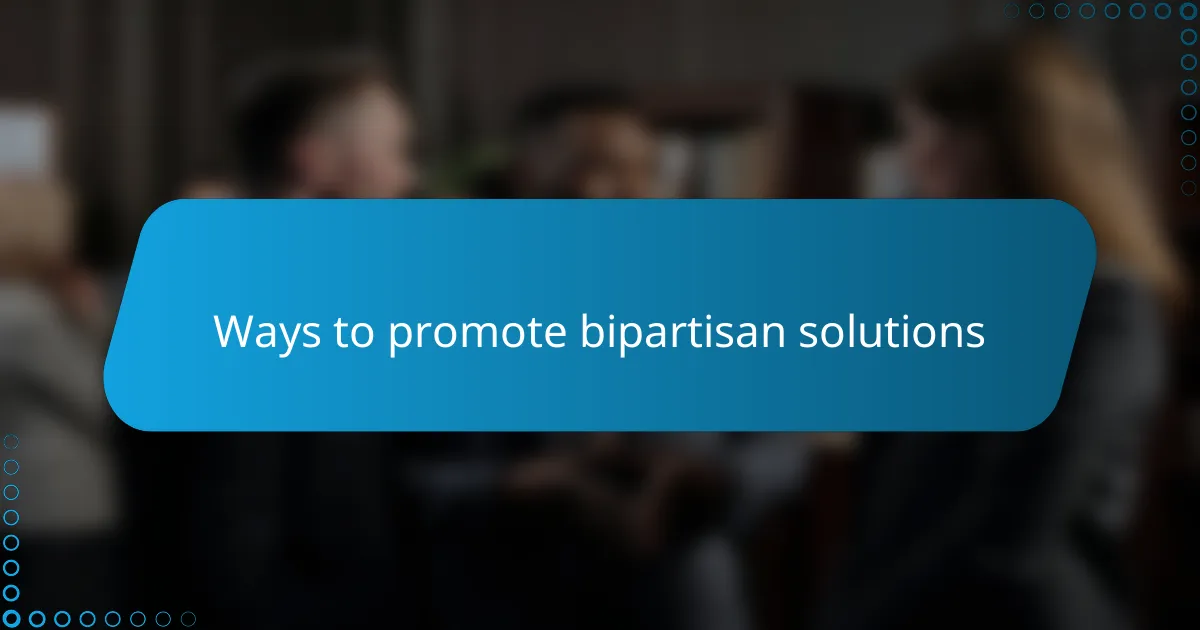
Ways to promote bipartisan solutions
One method I find compelling is fostering more bipartisan town halls where representatives engage directly with their communities. In my experience, when lawmakers hear diverse voices together, it challenges them to move beyond party scripts and consider real impacts. Isn’t it powerful when dialogue replaces monologue, and understanding starts to build?
I’ve also noticed the value of lawmakers participating in joint retreats or informal gatherings away from Capitol Hill. These settings can humanize colleagues, breaking down rigid stereotypes that fuel partisanship. Don’t we all respond better when we see each other as people first, rather than political adversaries?
Lastly, creating incentive systems that reward cross-party cooperation could shift behavior. For instance, why not recognize members who sponsor or co-sponsor bills with the opposite party? From what I’ve seen, positive reinforcement might encourage more bridge-building rather than wall-erecting—something our divided Congress badly needs.
